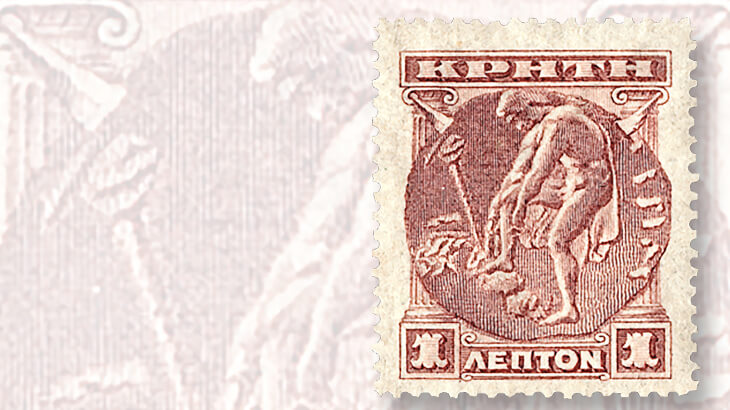World Stamps
Crete stamps offer wide range of collecting opportunities: Tip of the Week

By Henry Gitner and Rick Miller
Crete is the fifth largest island in the Mediterranean Sea. It was the center of the ancient Minoan civilization (2700-1420 B.C.), which preceded the Mycenaean and classic Greek civilizations of antiquity.
The Palace of Minos at Knossos is one of the best known and most spectacular archaeological sites in Europe. The beautiful wall frescoes of the lost civilization show a happy and productive people who attained a high level of civilization before being wiped out by volcanic eruption, tidal wave, earthquakes and invasions.
Crete was ruled by the Romans, Byzantines, and Venetians before being conquered by the Ottoman Empire in 1669. After repeated uprisings and revolts against the Ottomans, a Turkish massacre on Aug. 25, 1898, led to intervention by the Great Powers and the establishment of an autonomous Cretan state in November 1898.
Connect with Linn’s Stamp News:
Sign up for our newsletter
Like us on Facebook
Follow us on Twitter
The Cretan state issued its first postage stamps on March 1, 1900. In 1908, the Cretan Assembly voted for union with Greece, and Greek stamps supplanted those of Crete. The fait accompli of unification with Greece received international de jure recognition in 1913.
There are a lot of expensive and complicated forerunners, local issues, and offices abroad for someone looking for a heavy specialty. The stamps of the Cretan state are fairly straightforward, but not without their own challenges.
Crete appeals to a wide swath of different types of collectors: Greek specialists, dead country and classic stamp collectors, and topical collectors of mythology on stamps and Old World archaeology.
A good place to start is with the first set issued March 1, 1900 (Scott 50-53). The 2016 Scott Classic Specialized Catalogue of Stamps and Covers 1840-1940 values the set in unused hinged condition at just $10.75, and it is a good buy at that price.
MORE RELATED ARTICLES
Headlines
-
US Stamps
Oct 7, 2024, 3 PMMcMurtrie dismissed as APS education director following Sept. 21 arrest
-
US Stamps
Oct 7, 2024, 12 PMVasiliauskas named president of Mystic Stamp Co.
-
US Stamps
Oct 6, 2024, 5 PMApgar souvenir card available
-
US Stamps
Oct 6, 2024, 4 PMFirst Continental Congress and U.N. stamps receive Scott catalog numbers








